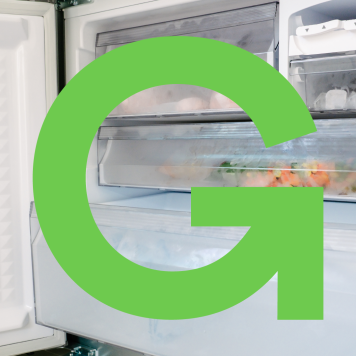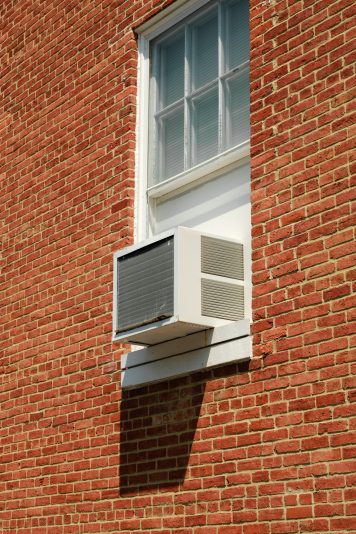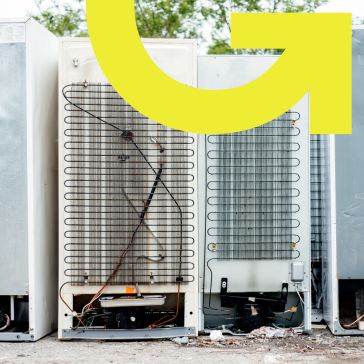Maintaining your freezer is essential to maximize its lifespan. A properly maintained freezer guarantees both peace of mind and lower energy costs.
Read our practical maintenance guide for tips and tricks on how to extend the lifetime of your freezer and boost its performance. From regular defrosting to deep cleaning, we’ll explore each aspect of freezer maintenance to ensure optimal food preservation and maximum durability.
What is the life expectancy of a freezer?
According to Gifam, a household freezer has an average lifespan of about 13 years. However, with regular maintenance, it can last even longer.
Why is regular freezer maintenance so important?
Whether you have an upright, chest or mini freezer, proper maintenance is essential to:
- Keep it running smoothly
- Save money and energy
- Extend its service life
- Preserve your health by eliminating breeding grounds for bacteria and cross-contamination risks that can jeopardize sanitary food quality
- Avoid unnecessary freezer repair costs for parts or labour
- Avoid having to replace your freezer before it’s due
Steps for maintaining your freezer
How can you maintain your used freezer to extend its service life? Here are a few steps to follow.
Step 1: Unplug and empty your freezer
Before doing any kind of maintenance on your freezer, you must first unplug it from all power sources to avoid accidents.
You must also empty your freezer of all food. We suggest keeping your food frozen by putting it in another freezer. You can also store it in a cooler filled with ice.
However, if your food has time to defrost during maintenance, it will have to be cooked. Refreezing defrosted food items is dangerous, as it can promote bacterial growth, which can cause food poisoning (source). It is therefore best to choose a moment when your freezer is nearly empty to perform maintenance. Take this opportunity to sort through your food and dispose of any expired items.
Step 2: Defrost your freezer
Your freezer must be defrosted as soon as the ice layer is about 5 millimetres thick. This is because excess frost can reduce your freezer’s energy efficiency. To do so, once you have removed the items inside, unplug your appliance and allow the ice to melt. Then, clean the interior by following the instructions in Step 3.
Step 3: Clean the inside of your freezer
Cleaning the inside of your freezer is necessary to preserve food quality and avoid contamination. Here’s how to do it:
- Remove all shelves, racks and drawers
- Soak the shelves and drawers in soapy water (using dish soap) in the kitchen sink, if possible. Otherwise, wash by hand using a sponge filled with dish soap
- While they soak, clean the inside of your freezer using warm soapy water (dish soap) and a sponge, then dry completely. Be sure to use warm water, since hot water can damage glass or plastic parts
- Scrub shelves, racks and drawers once they have soaked in the soapy water, then rinse and dry
- Put the shelves, racks and drawers back in place
- Using a wet rag, wipe down the seal inside the freezer door to remove built-up dirt, which can prevent it from sealing properly. Replace the seal if it shows signs of damage
Step 4: Clean the outside of the freezer and the coils
Now that you’ve given the inside of your freezer some TLC, it’s important not to neglect the outside. Follow these simple steps to ensure that your appliance runs smoothly and lasts longer:
- Wipe down the doors, handles and the entire freezer surface (except the back) using a damp cloth and a few drops of dish soap to remove all dust and dirt buildup
- Carefully pull your freezer out to safely reach behind it
- Gently clean the coils behind the freezer by removing dust or dirt buildup using a damp cloth or sponge. Accumulated dirt can damage the compressor, which can force the appliance to use more energy to maintain an optimal temperature, while potentially reducing its lifespan and increasing energy costs
- Sweep under and around the freezer to remove dust buildup
- Be sure to dry out all washed parts completely before plugging your freezer back in. Only put your food items back in once the appropriate temperature has been reached
Step 5: Organize your freezer and adjust the temperature
It is also recommended to organize your freezer in an optimal manner. To allow cold air to circulate properly between food items, avoid overloading your appliance. For the best food preservation possible, ensure you have set the temperature according to the manufacturer’s recommendations.
We invite you to follow the steps in your appliance’s instruction manual at all times. Instructions may vary depending on your freezer model and the year of manufacture.
When to repair a freezer
If your freezer no longer freezes or freezes less than it used to despite adjusting its temperature, there could be a refrigerant gas leak in your cooling system. We recommend calling a freezer repair service without delay. Refrigerant gases are greenhouse gases (GHG) that are harmful to the environment and are 140 to 11,700 more powerful than CO₂.
A freezer should always be repaired before being replaced with a new one. This helps avoid using the raw materials required for the production of a new appliance.
Environmental impact of a freezer that is not recycled
Has your old freezer given out, despite taking good care of it? Before you leave it on the side of the road, did you know that recycling your freezer is equivalent to 488 bus rides to work?
“(…) a refrigeration appliance generates an average of 1 ton of GHG! If an appliance is not recycled properly, then the gases and hazardous materials it contains are not disposed of correctly… and subsequently released into the environment. Halocarbons are greenhouse gases with substantial environmental impacts that contribute to climate change.” GoRecycle
How to recycle your old freezer
When you entrust your freezer to one of GoRecycle’s 300 drop-off points throughout Quebec, 95% of its materials are recovered.
A number of retailers also offer a free removal service when you purchase a new freezer. Some Quebec municipalities also offer a freezer home removal service; a tangible gesture to help protect the environment.
So get cleaning and give your freezer a new lease on life!



